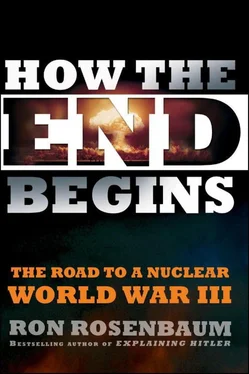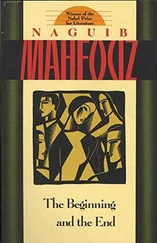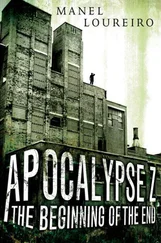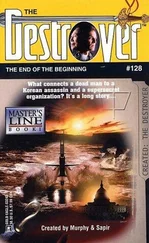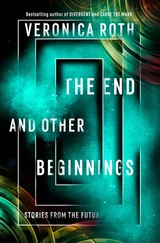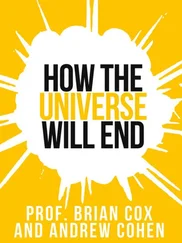and collapse of Soviet Union, 215
doomsday machine of, 87–93, 107, 112
eliminating nuclear weapons and, 29, 211, 213, 229–35
Ellsberg and, 75
on EMPs, 107
in encounters with U.S. bombers, 99–100
and fear of decapitation and surprise attack, 7, 112–16
Georgia invaded by, 11, 27, 202–5, 235
Iran and, 3, 167, 170
Israel and, 3–4, 220
lowered nuclear threshold of, 204
Minot mistake and, 14–15
missile defense systems and, 9, 12–13, 27, 205–6, 211
Monte Carlo runs and, 113–15, 124
nuclear optimism and, 128
nuclear submarines of, 257
nuclear taboo and, 246, 252, 255
nuclear war casualties and, 76–77, 79, 81
in nuclear war games, 199–201, 207
nuclear weapons acquired by, 168, 248
and nuclear weapons command and control, 52–53, 59–60, 82, 90–94, 98, 100, 104, 107, 110–11, 120, 216
nuclear weapons modernization and buildup of, 13–14
nuclear weapons treaties and, 209, 211
in “100 Nuclear Wars” plan, 121–23
in preventing accidental use of nuclear weapons, 118–20, 123
and reducing number of nuclear weapons, 12–13, 44
strategic flights of, 9–12, 14–15, 27, 100
Syrian nuclear facilities and, 3–4
U.S. cooperation with, 93–94, 111–12, 116–18
U.S. secret reconnaissance on, 98–100
“Russia’s Nuclear Renaissance” (Mizin), 13–14
Rwandan genocide, 139, 148
Samson Option, 21–22, 141–42, 148
Schell, Jonathan, 49
Schelling, Thomas, 73, 158
Schlesinger, James, 35–36, 220
Scientific American, 77–78, 128
“Second Holocaust Will Not Be Like the First, The” (Morris), 136–37
Sheidlower, Jesse, 240
Shultz, George, 212, 215, 229–30
Single Integrated Operational Plan (SIOP), 22, 92–93, 222, 238
Blair and, 93, 97, 99
Ellsberg and, 74–76, 82
Six Day War, 127, 136
Smith, P. D., 88–90, 92
Spectator, The, 1–2, 4, 113, 179
Spiegel, Peter, 209–10
spoon-and-string maneuver, 62–63, 71, 83, 101, 158–59, 245, 248
Star Wars system, 55, 230
State Department, U.S., 135, 171, 194, 204, 228–29
Steiner, George, 86
Strategic Air Command, see Strategic Command
Strategic Arms Reduction Treaties (START), 12–13, 27, 116, 121, 123, 209–12, 228–29, 233, 244
Strategic Command (STRATCOM), 10, 44, 54, 69, 210, 220
and nuclear weapons command and control, 36, 38, 46, 50, 57–63, 103–4
Qwest Center deterrence symposium and, 30, 45, 50
Rosenbaum’s visits to, 45–50, 57–63, 75
secret Russian reconnaissance of, 99–100
war room of, 46–47
Strategic Command and Control (Blair), 96, 220
“Subterranean World of the Bomb, The” (Rosenbaum), 48–50
Supreme Court, U.S., 34–35, 37, 147
supreme emergencies, 152, 155–57, 159–60, 163
Suri, Jeremi, 100
Syria, 21
nuclear facilities of, 2–5, 8, 11, 15–16, 113, 134, 140, 145–46, 168–92, 194–97, 199, 202, 208, 258
Pakistani nuclear weapons and, 4, 17
in wars with Israel, 136, 163
Szilard, Leo, 89–90, 143
Taiwan, 14, 22, 227, 234–35
Taiwan Straits crises, 247
Tannenwald, Nina, 245–50, 255
Tepperman, Jonathan, 128–29
terrorism, 34, 110, 116, 212, 221
and collapse of Soviet Union, 215
cyber-, 23, 32–33
India–Pakistan relations and, 16–18
NATO’s preemptive strike option and, 26–27
on 9/11, 24, 47, 233, 253
nuclear, 51, 78, 81, 131, 233
nuclear forensics and, 64
of nuclear weapons, 1, 5, 8, 16, 18, 26, 51
and nuclear weapons command and control, 63–64, 103, 105
Traynor, Ian, 26
Truman, Harry, 241, 247
Turner, Stansfield, 6–7
Ulam, Stanislaw, 115
United Kingdom, 1–2, 10, 25–26, 88, 123, 171
in Cold War close calls, 7, 113
collision of nuclear submarine of, 248–49
and nuclear weapons command and control, 40–42, 158
supreme emergencies and, 156
Syrian nuclear facilities and, 2, 4–5, 179
United Nations, 29
Iran and, 20, 166, 180
and morality of retaliation, 67
and U.S. invasion of Iraq, 176
Vietnam War, 36, 71, 74–77, 98, 100, 247
Walker, Lucy, 49
Wall Street Journal, 19, 198, 209–10, 212
Waltz, Kenneth, 128
Walzer, Michael, 152–53, 155–57, 159
WarGames, 47
War in Human Civilization (Gat), 43
Warnke, Paul, 246
Warsaw Pact, 25, 112, 201, 252
in nuclear war games, 206–7
Washington Post, The, 23, 53, 219, 252
Weinberger, Sharon, 103
Weisman, Jonathan, 209–10
Whole World on Fire (Eden), 77
“Why No Retaliation?” (Lang), 150
“Why the Soviet Union Thinks It Could Fight & Win a Nuclear War” (Pipes), 113–14
Winfrey, Oprah, 252
“World Free of Nuclear Weapons, A,” 212
world holocaust, 258–60
Burke on, 239–40, 242–44
World War II, 117, 135, 140, 148
Burke in, 241–42
casualties in, 78
nuclear taboo and, 251, 254
nuclear weapons in, see Hiroshima; Nagasaki
supreme emergencies in, 155–56
Worsthorne, Sir Peregrine, 218
Yao Yunzhu, 69
Yarynich, Valery E., 110–23
Blair’s relationship with, 93–94, 110, 119
and fear of decapitation and surprise attack, 112–16
Monte Carlo runs and, 111, 113, 115–16, 123, 125, 131
and nuclear weapons command and control, 94, 111–12, 117–21
“100 Nuclear Wars” plan of, 116, 120–23
PERIMETR and, 111–12, 116
on preventing accidental use of nuclear weapons, 118–21, 123
Yom Kippur War, 127, 163–64, 220–21
Zamoshkin, Yuri, 130–31
I’ve dedicated the book to ex-Major Harold I. Hering (Ret.), whose courage in asking a Forbidden Question about the efficacy and sanity of our nuclear command and control system first led me to begin reporting on these questions at the height of the Cold War.
I’d like to thank Lewis Lapham, legendary Harper’s editor, for supporting my two-year foray into “the subterranean world of the bomb” initiated by Major Hering’s question.
I would like to thank all those, such as Bruce Blair, who sought to reawaken the world to the danger of the second age of nuclear war we were entering and shook me out of my complacency sufficiently to make it my mission to try to map out the terra incognita (terror incognita?) of the new nuclear landscape.
Among them I’d include Cormac McCarthy, someone I’ve never met, but whose novel The Road, which came to my attention when reviewed in the same issue of the New York Times Book Review as my Shakespeare book, sensitized me to the continued potential for annihilation we faced. And recalled to me the exchange at the close of King Lear:
“Is this the promised end?”
“Or image of that horror.”
I’m grateful as well to those four signers of the Wall Street Journal nuclear abolition manifesto who demonstrated that the case for Zero was not some peeling peacenik bumper sticker, but a strategic goal worthy of debate. And to the president, who put nuclear abolition at the forefront of our foreign policy at a time when it had largely been forsaken or forgotten.
I’m indebted to researchers, writers, thinkers, and activists such as Hans Kristensen of the Federation of American Scientists and William Burr of George Washington University’s National Security Archive for uncovering shocking deficiencies of nuclear command and control in the first nuclear age that, they’ve demonstrated, persist into the second. To Dr. Jeffrey Lewis and his extremely well-informed cohorts at the armscontrolwonk.com blog, for penetrating the scrim of PR and euphemism that often masks the truth about our nuclear posture. And to intelligent skeptics of abolitionism such as Elbridge Colby, Anne Applebaum, Peter Berkowitz, and Bret Stephens, whose arguments challenged the Zeroistas and forced me to sharpen my thinking on the question. To authors such as Michael Dobbs and David Hoffman, who revealed just how precarious the supposed stability of the first nuclear age was.
Читать дальше
